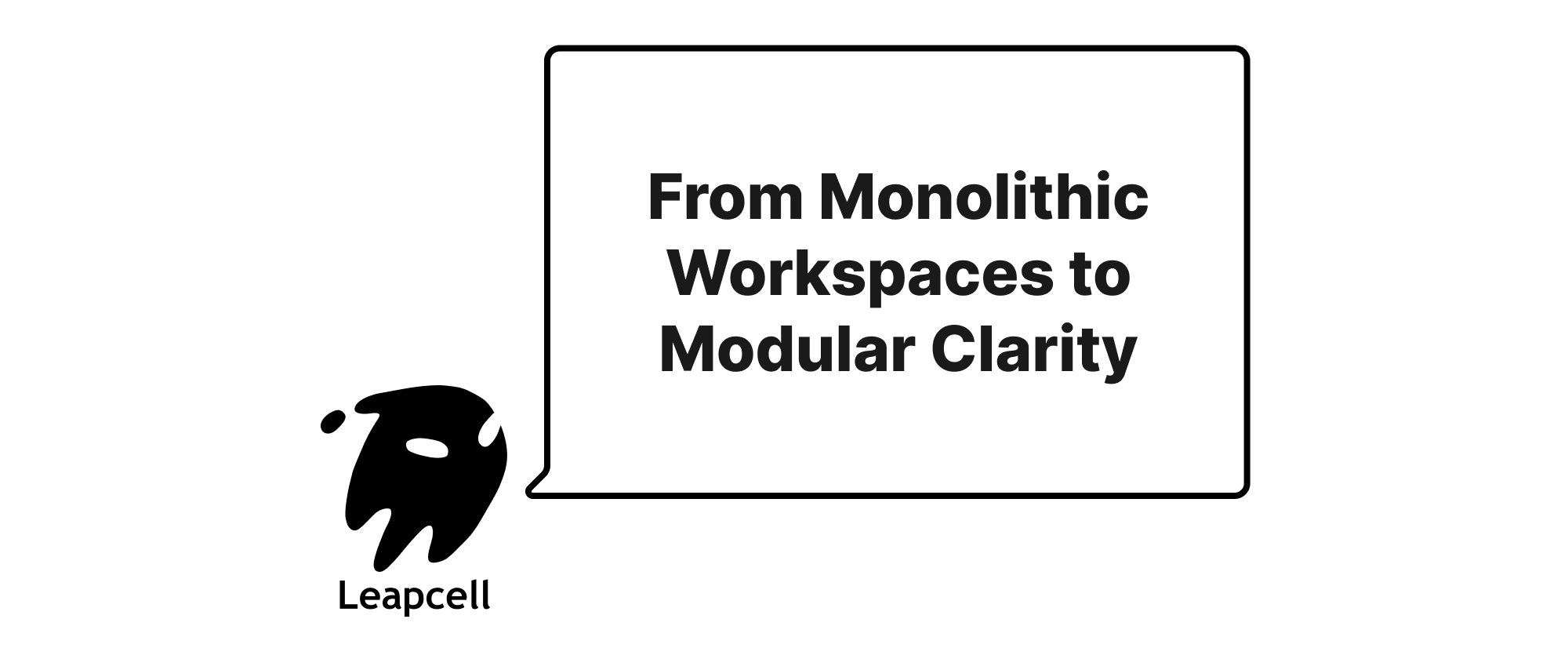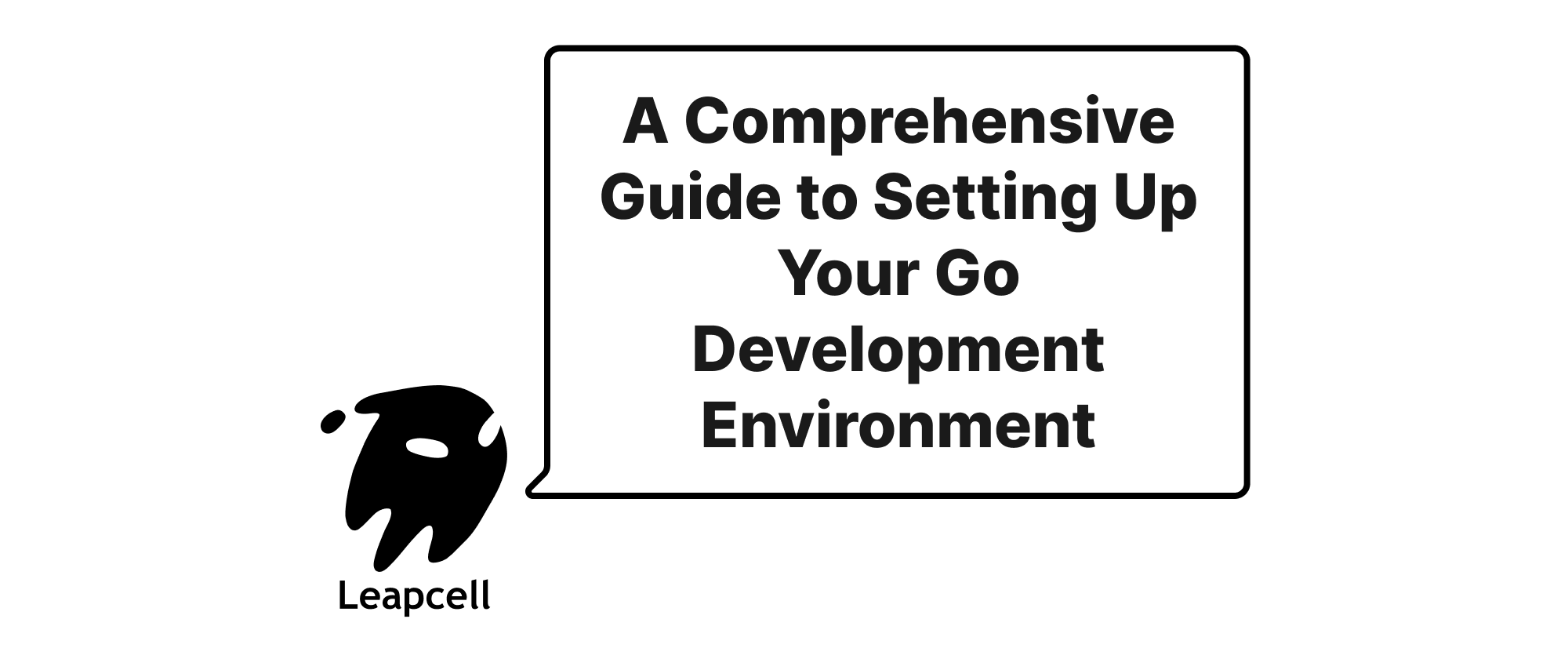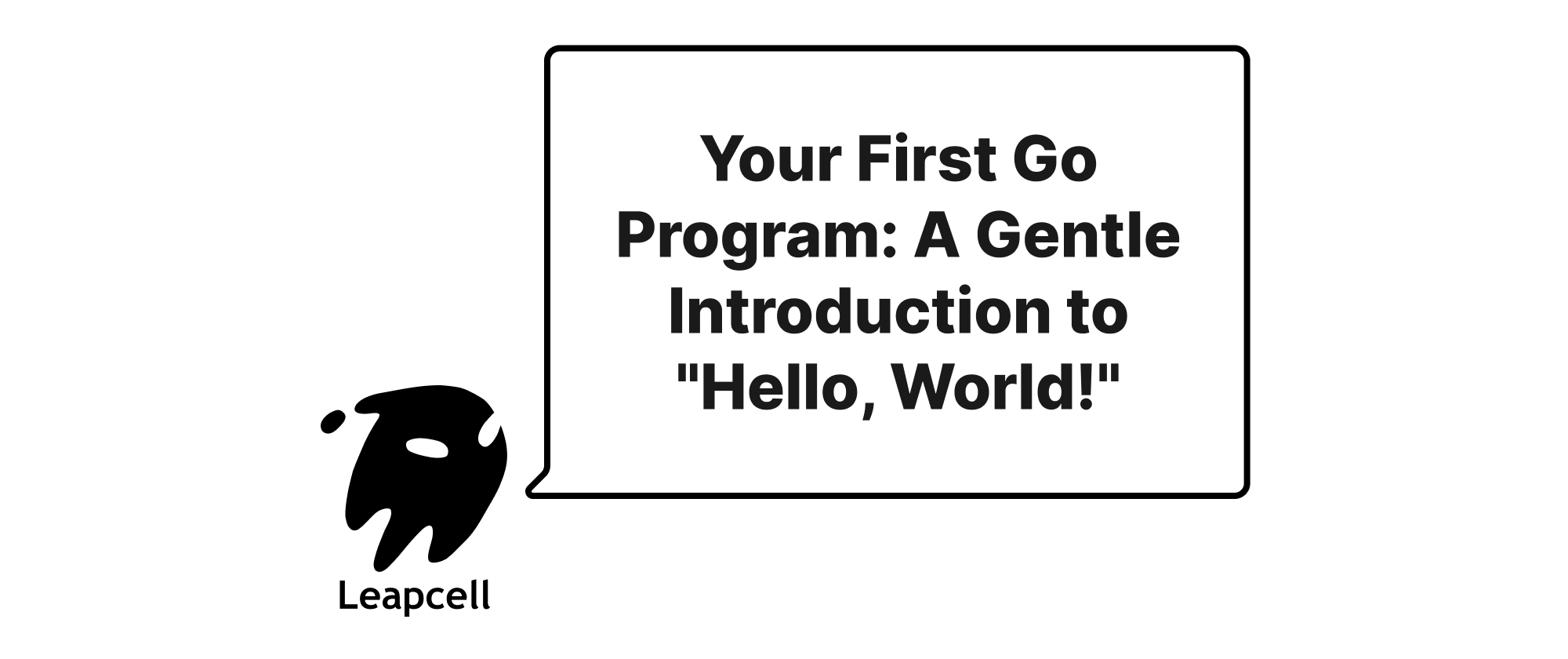From Monolithic Workspaces to Modular Clarity: Understanding Go's Dependency Management Evolution
Min-jun Kim
Dev Intern · Leapcell

Go, known for its simplicity, concurrency, and robust standard library, initially presented a unique approach to project structure and dependency management through GOPATH. While straightforward for simple projects, this model soon unveiled limitations as the language matured and projects grew in complexity. The evolution from GOPATH to Go Modules marks a significant milestone in Go's development, addressing critical issues like versioning, reproducibility, and isolation, thereby solidifying its position as a powerful tool for modern software development.
The Era of GOPATH: Centralized and Simple (Go 1.0 - 1.10)
Before Go Modules, GOPATH was the cornerstone of Go development. It defined a single workspace where all Go source code, compiled packages, and executable binaries resided.
Understanding GOPATH's Structure
GOPATH was an environment variable pointing to a directory, often $HOME/go by default. Within this directory, Go expected a specific structure:
src/: Contained all source files, organized by their import path. For example,github.com/user/projectwould live in$GOPATH/src/github.com/user/project.pkg/: Stored compiled package objects (e.g.,.afiles) for faster builds.bin/: Held compiled executable programs.
Workflow Under GOPATH
When you used go get github.com/some/package, the Go toolchain would download the package's source code directly into $GOPATH/src/github.com/some/package. All your projects, regardless of their individual requirements, would then use this single downloaded version of the dependency. Your own project's source code also had to reside within $GOPATH/src/ to be discoverable and buildable by the go tool.
Let's illustrate with a simple GOPATH-era project structure:
$GOPATH
└── src
└── github.com
└── myuser
└── myproject
└── main.go
└── some_dependency
└── some_dependency.go # Downloaded via go get
Consider main.go that uses github.com/gin-gonic/gin, a popular web framework:
// $GOPATH/src/github.com/myuser/myproject/main.go package main import ( "log" "net/http" "github.com/gin-gonic/gin" // Implicitly looks for this in $GOPATH/src ) func main() { r := gin.Default() r.GET("/ping", func(c *gin.Context) { c.JSON(http.StatusOK, gin.H{ "message": "pong", }) }) log.Println("Server starting on :8080") r.Run(":8080") // listen and serve on 0.0.0.0:8080 }
To build and run this, you would navigate to $GOPATH/src/github.com/myuser/myproject/ and run go build or go run ..
Limitations of GOPATH
While simple, GOPATH suffered from several critical drawbacks that escalated with project complexity:
- No Versioning: All projects shared the exact same version of a dependency installed in
GOPATH. If project A neededpackage@1.0.0and project B neededpackage@2.0.0, this led to "dependency hell," as only one version could exist inGOPATH/src. This made reproducible builds extremely challenging. - Lack of Isolation: Projects were not isolated from each other. Changes to dependencies for one project could inadvertently break others relying on the same (global)
GOPATHinstallation. - Project Location Constraint: Your project source code had to be within
GOPATH/src/, which felt restrictive and unnatural for many developers. You couldn't simply clone a repository anywhere on your system and expectgo buildto work without alteringGOPATH. - Slow Builds: While
pkg/helped, the lack of robust dependency caching and the need for frequentgo getoperations could still slow down development.
These limitations spurred the Go community to seek better solutions, leading to various unofficial dependency management tools like dep and Glide before an official solution emerged.
Go Modules: The Modern, Robust Solution (Go 1.11 onwards)
Introduced in Go 1.11 and becoming the default in Go 1.13, Go Modules revolutionized dependency management by bringing built-in, first-class support for versioning, isolation, and reproducible builds.
Core Concepts of Go Modules
Go Modules addresses the shortcomings of GOPATH by allowing projects to declare their dependencies and their specific versions directly within the project's root directory.
-
Module Definition (
go.mod): The heart of a Go module is thego.modfile. This file defines the module's path (its identity), the Go version requirement, and a list of its direct and indirect dependencies with their corresponding minimum required versions.module example.com/my-app go 1.22 require ( github.com/gorilla/mux v1.8.0 rsc.io/quote v1.5.2 // A transitive dependency of rsc.io/sampler ) -
Checksums for Integrity (
go.sum): Thego.sumfile stores cryptographic checksums of the module's dependencies. This ensures that when someone else builds your project, they use the exact same code that was used whengo.sumwas generated, preventing malicious tampering or accidental dependency changes.rsc.io/quote v1.5.2 h1:bxz9Fv8DkmA6z5x22z5l+vFz12x... rsc.io/quote v1.5.2/go.mod h1:m5xT+m/0e+Q1X+w0yX... -
Module Path: Every Go module has a "module path," which is fundamentally its import path. For a module hosted on GitHub, this would typically be
github.com/username/repo-name. This path is used ingo.modand also bygo getto locate the module. -
Semantic Import Versioning: Go Modules embraces semantic versioning (
MAJOR.MINOR.PATCH). For major versions (v2, v3, etc.), the module path itself is suffixed with/vN(e.g.,github.com/go-redis/redis/v8). This allows different major versions of the same dependency to coexist within the same module's dependency graph. New users fetching a v2 module will automatically get thev2version of the package. -
GO111MODULEEnvironment Variable (Transition Aid): During the transition fromGOPATHto Modules,GO111MODULEcontrolled the Go toolchain's behavior:auto(default): Inside$GOPATH/src, usesGOPATHmode. Outside, uses module mode if ago.modfile exists.on: Always use module mode, even inside$GOPATH/src.off: Never use module mode, always useGOPATHmode. Today, with Go 1.16+ typically used, module mode is almost universallyonby default, makingGO111MODULEless relevant for new projects.
Working with Go Modules
The workflow with Go Modules is intuitive and powerful:
-
Initialize a New Module: Navigate to your project directory (can be anywhere outside of
GOPATH/src) and run:mkdir my-go-app cd my-go-app go mod init example.com/my-go-app # Your module pathThis creates an initial
go.modfile. -
Add Dependencies: When you
importa new package in your.gofiles and then rungo build,go run, orgo mod tidy, the Go toolchain will automatically detect the missing dependency, download it, and add an entry to yourgo.modfile with the latest compatible version.Let's create a
main.gousingrsc.io/quote:// my-go-app/main.go package main import ( "fmt" "rsc.io/quote" // This will be downloaded and added to go.mod ) func main() { fmt.Println(quote.Hello()) fmt.Println(quote.Go()) }Now, run it:
cd my-go-app go run .Output:
Hello, world. Go is a general-purpose language designed with systems programming in mind.After running
go run .(orgo build), inspectgo.modandgo.sum:my-go-app/go.mod:module example.com/my-go-app go 1.22 require rsc.io/quote v1.5.2my-go-app/go.sum(truncated for brevity):rsc.io/quote v1.5.2 h1:bxz9Fv82... rsc.io/quote v1.5.2/go.mod h1:m5xT+m... rsc.io/sampler v1.3.0 h1:aQ2N... rsc.io/sampler v1.3.0/go.mod h1:t2N...Notice that
rsc.io/samplerwas also added, as it's a transitive dependency ofrsc.io/quote. -
Explicitly Add/Update Dependencies: You can explicitly add or update a dependency to a specific version:
go get github.com/gin-gonic/gin@v1.9.1 # Add specific version go get github.com/gin-gonic/gin@latest # Update to latest stable go get github.com/gin-gonic/gin@master # Get from master branchThese commands will modify
go.modandgo.sumaccordingly. -
Clean Up Unused Dependencies:
go mod tidyThis command removes unused dependencies from
go.modandgo.sum, ensuring your dependency graph is minimal and accurate. -
Vendoring (Optional): For environments with restricted internet access, you can "vendor" dependencies, placing them into a
vendor/directory within your project:go mod vendorFuture builds will then use the vendored dependencies instead of fetching them from the network, provided
GOFLAGS=-mod=vendoris set or implicit for Go versions < 1.14 (post Go 1.14, you implicitly use vendor if thevendorfolder exists). -
replaceDirective: Useful for local development or forking. It allows you to replace a module dependency with a different path, either local or remote:// go.mod module example.com/my-app go 1.22 require ( example.com/my-dep v1.0.0 // Normally points to a remote repo ) replace example.com/my-dep v1.0.0 => ../my-dep-local // Use local version // Or replace example.com/my-dep v1.0.0 => github.com/myuser/my-dep-fork v1.0.0
Benefits of Go Modules
- Reproducible Builds:
go.modandgo.sumprecisely define the dependency tree and cryptographic hashes, ensuring that builds are identical every time, everywhere. - Version Management: Solves "dependency hell" by allowing different projects (or even different parts of the same project's transitive dependencies) to use different versions of the same package.
- Project Isolation: Projects are self-contained. You can clone a Go module anywhere on your file system, and
go buildwill work without needing to setGOPATHor place the project within it. - Simplified
go get:go getnow understands versions and modules, fetching exactly what's specified. - Dependency Caching: Dependencies are downloaded into a global module cache (typically
$GOPATH/pkg/mod), so they are only downloaded once and reused across different projects. - Proxy Support (
GOPROXY):GOPROXYallows configuring a Go module proxy server that acts as a cache and/or a source for modules, improving reliability and security, especially in corporate networks.go.sumvalidation still ensures integrity.
Understanding the Evolution: A Paradigm Shift
The shift from GOPATH to Go Modules represents a fundamental change in how Go projects are structured and managed.
- From Global to Local:
GOPATHimposed a global, monolithic workspace where all projects shared the same set of dependencies. Go Modules shifts this to a local, project-centric approach, where each project's dependencies and their versions are explicitly declared and isolated. - From Implicit to Explicit:
GOPATHrelied on implicit discovery based on directory structure. Go Modules makes dependencies explicit throughgo.modandgo.sum, providing clarity and control. - From "Just Works" (Sometimes) to Reproducible Stability: While
GOPATHwas simple for greenfield projects with no conflicting dependencies, it quickly became a headache for anything beyond. Go Modules prioritizes stability and reproducibility, essential for robust software development.
Today, new Go projects should almost exclusively use Go Modules. While GOPATH still exists and serves purposes for the Go toolchain itself or very old projects, it is no longer the recommended way to manage application source code or dependencies.
Conclusion
The evolution of Go's dependency management from GOPATH to Go Modules is a testament to the language's commitment to addressing developer pain points and maturing its ecosystem. GOPATH served its purpose in Go's formative years, establishing a straightforward convention. However, as Go gained traction in larger, more complex systems, its limitations became apparent.
Go Modules elegantly solves the challenges of versioning, isolation, and reproducibility, providing a powerful, built-in solution that stands on par with modern package managers in other language ecosystems. This transformation has significantly enhanced Go's appeal for building reliable, maintainable, and scalable applications, making the Go developer experience smoother and more efficient than ever before. Understanding this evolution is crucial for any Go developer, allowing them to leverage the full power of Go's modern tooling.


